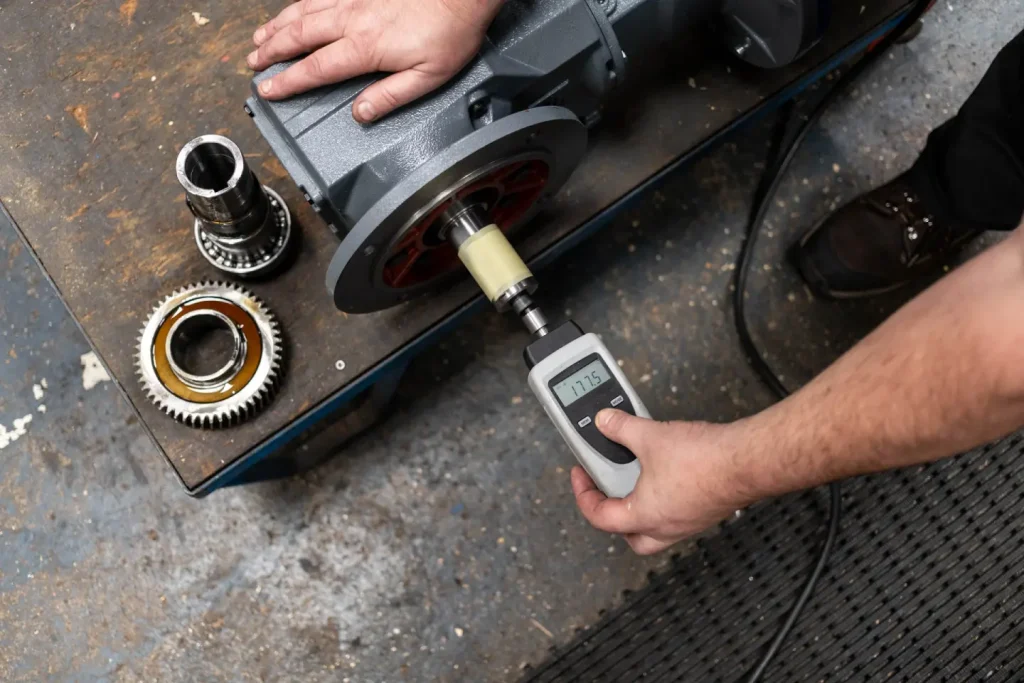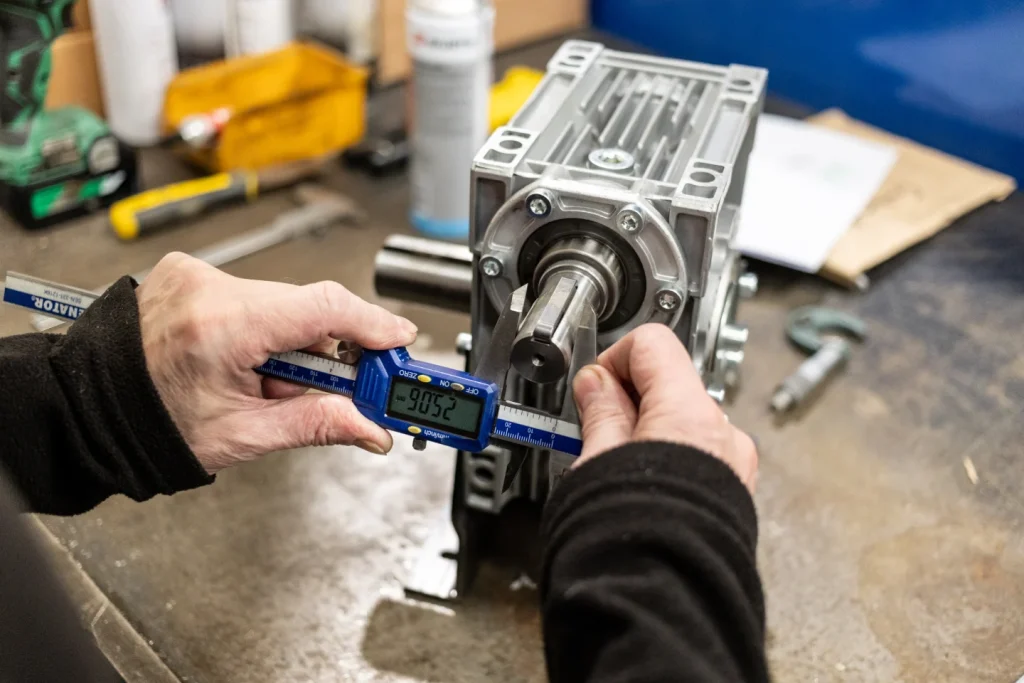How OEM engineers can extend gearbox life and reduce downtime
Downtime is one of the most significant risks in manufacturing operations. A single industrial gearbox failure can halt an entire production line, whether it’s a recycling plant, food processing line, or water treatment facility. In some sectors, just one hour of inactivity can cost thousands.
Designing gearboxes with preventative maintenance in mind helps OEM engineers safeguard reliability, control lifecycle costs, and minimise unexpected downtime. Lessons from decades of gearbox inspections and repairs have enabled us to provide practical guidance that can be applied to any industrial application.
The essentials of preventative gearbox maintenance
Preventative maintenance starts with design and continues throughout a gearbox’s operational life. Key areas to consider include:
- Lubrication management – Specify the correct lubricant for the application and recommended maintenance intervals. Incorrect oil or neglected schedules is one of the most common causes of premature gearbox failure.
- Temperature monitoring – Overheating is an early warning sign. Infrared checks or thermal imaging can detect rising temperatures caused by bearing wear or lubrication issues.
- Vibration analysis – Abnormal vibration often indicates internal wear, misaligned shafts, or bearing problems. Establishing a baseline during commissioning makes ongoing monitoring more effective.
How often should OEMs inspect gearboxes?
Routine inspections should be non-negotiable consisting of:
- Monthly: Visual checks for leaks, paint discolouration, or unusual wear
- Quarterly: Vibration and temperature monitoring
- Annually: Lubricant replacement
High-duty environments, such as quarries, recycling facilities, or food processing lines, may require more frequent checks due to dust, moisture, and load peaks.
Why maintaining a gearbox health log is essential
Keeping a detailed record of inspections, oil changes, and vibration or temperature readings helps track wear over time and identify trends. For OEM engineers, designing gearboxes with clear maintenance guidance and ensuring downstream operators or service teams have the guidance to maintain records supports smoother planning, reduces downtime, and protects long-term reliability.
Nichola Adshead our Sales Director says:
“Observing where wear starts helps engineers design maintenance schedules that prevent costly failures”
Engineering observations
From decades of industrial gearbox inspections, certain warning signs consistently appear, helping engineers design maintenance routines that reduce unexpected failures:
- Oil leaks on input or output shafts
- Discolouration of paint or housing from overheating
- Abnormal noise under load
- Increased backlash or endplay
- Blocked or dirty breathers causing pressure build-up
Recognising these red flags early allows engineers to take corrective action before failures result in costly downtime.
Preventative maintenance checklist for OEM engineers
Integrating these lessons into your gearbox strategy ensures reliability and longer service life:
- Specify the correct lubricant and replacement intervals
- Monitor gearbox temperature consistently
- Establish vibration baselines and perform routine checks
- Inspect seals, gaskets, and breathers regularly
- Keep the gearbox and surrounding area clean
- Maintain a detailed maintenance log
Learning from decades of industrial gearbox experience
Inspection and repair work over 50 years has shown us that reliability is built long before a failure occurs. Design decisions, proactive maintenance, and monitoring practices all contribute to longer industrial gearbox life and fewer operational disruptions. OEM engineers who embed preventative maintenance thinking into the design stage protect both the gearbox and the end user.
OEM engineers can use these insights to optimise industrial gearbox design and maintenance plans. For guidance on specifying reliable gearboxes, our engineering team can provide practical advice based on 50 years of UK gearbox expertise. Contact our team to learn more.



